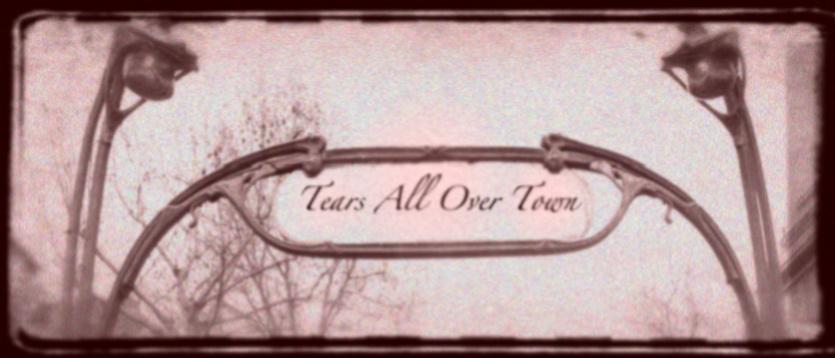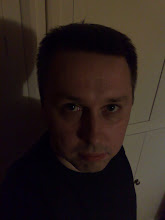
I, like a lot of comic-book fans, have waited a long time for Watchmen to come to the big screen. Sometimes it seemed too ridiculous a notion to comtemplate: who was insane enough to even
try to adapt something so dense and multi-layered?
Watchmen differed from much of my comic-book history; my love for Batman and Spider-Man started at a young and impressionable age and were informed by my dad's enjoyment of them. At six or seven I would borrow his best of anthologies and then subsequently go on to create my own comic collection.
But Watchmen was, for many of us, a revolution that happened in comics while we were in our late teens; it was
ours. It belonged to us. It wasn't part of a golden or silver age (although it certainly referenced both); it was something entirely new. As every issue arrived it was evident that this was clearly a milestone in comic history. It was complex and thrilling and fascinating; it referred to that aforementioned golden and silver age of comics and gave it a new and somewhat poignant spin. And it comtemplated a world that was still wrestling with the notion of imminent nuclear catastrophe.
A few years later, myself and an old friend, Chris had the pleasure of meeting Alan Moore at a friends comic store, and spent an afternoon in his company. Moore in person is a fascinating set of contradictions. A big man with a big beard and long, wild hair. He
looks insane. That day he was wearing a string vest. But as we discovered, Moore was delightful company; full of sparkling humour and tall stories, and of course, well versed in just about any subject. It was a fine day, made ever so slightly hazy by the selection of flavoured bottles of vodka on offer. He signed a stack of books for us and after several hours we took the train back to Birmingham with a memory two comic book nerds (that we were and sort of still are) would treasure forever.
So Watchmen became a little bit sacred to me and to all that discovered it for themselves. How could anyone hope to transfer something so inherently
comic-book to celluloid
and satisfy me and its legions of fans worldwide?

But to my surprise, Zach Snyder has pretty much done us proud.
Watchmen is far better than I anticipated. Although I enjoyed Snyder's previous efforts - the re-make of Dawn of the Dead and his adaption of Frank Miller's 300 - my reservations were that although they were visually impressive, there was very little actual 'meat on the bones'.
And while his adaption of Miller's 300 was a slavish, almost obsessively detailed exercise in making Miller's art come alive on screen, the blame for the slightly juvenile nature of the movie could just as easily be laid at the artist's door as much as Snyder's. 300 is a beautiful book to look at, but it is (for me at least) one of Miller's lesser efforts.
When it was revealed that Snyder was taking on the almost herculean task of translating Watchmen for the screen, I was fairly sure that it would at least
look like Dave Gibbon's beautiful and ridiculously detailed art come to life; as for the feat of getting one of Alan Moore's most celebrated pieces of writing into the cinema intact... well, I wasn't all that optimistic. Despite all of Snyder's reverential talk of being as faithful to the book as he was to 300, Watchmen seemed to me to be just
too big,
too complex to be serviced in celluloid.

For a start, there's a lot of text in Watchmen in those appendices at the end of every issue, a rich intertextual seam of backstory and history that breathes a lot of life to what amounts to a relatively slight murder-mystery as the book's fulcrum. Of course, the mystery of who killed The Comedian is incidental in Watchmen; it's far from the most important aspect of the book. Moore and Gibbon's opus is about the Cold War and the threat of nuclear war and, by extension, the notion of power and control. It's also a dark and satirical treatise on comic history; its inherent absurdities and its natural conclusion. And it's one of the finest examples of a writer and artist working at the top of their game together.
Last year, The Dark Knight established that comic-book heroes on the big-screen could be treated as more than just fluff: an origin, a villain and a big CGI finale. But although he was working with a character with almost seventy years of history, Christopher Nolan's film was its own beast; it cherry picked all that was good about Batman and only had its predecessor, Batman Begins to live up to. Had he been adapting Frank Miller's The Dark Knight Returns, fans might have been a little more hard-core and nit-picking (as is their wont) in their analysis of his movie making.
But essentially, Snyder's Watchmen
is Moore and Gibbons' Watchmen. It's reverent and more often than not, absolutely spot-on. Although some of the book is unfilmable, 90% is made for film. Gibbons' layouts are inherently cinematic and follow a clean narrative structure. It's a storyboard waiting to happen.
What Snyder has done is eliminate the fat, but retain an incredible amount of minutae, both plot-wise and graphically. There
are sacrifices: the news vendor and his young Black Freighter comic book reader are given short-shrift (although that comic that serves as a sort of meta-fiction has been animated and may be cut back into the movie as part of the director's cut), the psychiatrist's obsession with Rorschach is limited, and of course the much talked about omission of the alien squid at the finale (which, to be frank, was always an absurdity too far anyway, and is replaced with something that works far better for me here).
But any detractions are minor when weighed against the many pros during these 160-odd minutes. The opening credits act as a potted history of The Minutemen and their place in time, to the strains of Dylan's
The Times They Are A Changin', and are a delight, filled with little 'easter eggs' from those intertextual appendices, while also serving as an introduction to the newbies in the audience.
There are a few standout performances amongst the generally excellent cast. Jackie Earl Haley's interpretation of Rorschach and Walter Kovacs is spot-on; he's essentially the crypto-fascist element evident in Batman or his template, Steve Ditko's The Question. But we can't help but sympathise to an extent with his anger at the world. Jeffrey Dean Morgan makes the most of his limited screen time as The Comedian; a gun for hire monster who seems to
want someone to stop him (as in the chilling scene with Manhattan and the preganant Vietnamese woman). Billy Crudup is excellent too under the heavy CGI as Dr Manhattan, a man adrift from the world and time and serving as the finale's fall guy; creating a new utopia over the fear of an angry god.
There's much more to Snyder's Watchmen to be discussed, and more to be gleaned from future viewings. The notion of a director's cut with another thirty minutes only adds to its appeal, a film
made for the blu-ray generation. All in all, there's sufficient
depth to it, and that's the big surprise for me. It may not be an absolutely perfect movie but for me, it's the best Watchmen movie that I could have possibly expected.
Now, who's up for The Dark Knight Returns?
 When Serge Gainsbourg died on 2 March 1991, the news resulted in Paris coming to a standstill. Police blocked off the streets around his home at the Rue de Verneuil as thousands flocked, in much the same way that John Lennon's fans had gathered at the Dakota building. There was nothing on the TV but Gainsbourg all day long; the radio a continous rotation of Serge's prodigious backcatalogue. People in tears. Flags were flown at half-mast. French President Francious Mitterrand said of him, "He was our Baudelaire, our Apollinaire... He elevated the song to the level of art."
When Serge Gainsbourg died on 2 March 1991, the news resulted in Paris coming to a standstill. Police blocked off the streets around his home at the Rue de Verneuil as thousands flocked, in much the same way that John Lennon's fans had gathered at the Dakota building. There was nothing on the TV but Gainsbourg all day long; the radio a continous rotation of Serge's prodigious backcatalogue. People in tears. Flags were flown at half-mast. French President Francious Mitterrand said of him, "He was our Baudelaire, our Apollinaire... He elevated the song to the level of art."


















 But to my surprise, Zach Snyder has pretty much done us proud.
But to my surprise, Zach Snyder has pretty much done us proud. For a start, there's a lot of text in Watchmen in those appendices at the end of every issue, a rich intertextual seam of backstory and history that breathes a lot of life to what amounts to a relatively slight murder-mystery as the book's fulcrum. Of course, the mystery of who killed The Comedian is incidental in Watchmen; it's far from the most important aspect of the book. Moore and Gibbon's opus is about the Cold War and the threat of nuclear war and, by extension, the notion of power and control. It's also a dark and satirical treatise on comic history; its inherent absurdities and its natural conclusion. And it's one of the finest examples of a writer and artist working at the top of their game together.
For a start, there's a lot of text in Watchmen in those appendices at the end of every issue, a rich intertextual seam of backstory and history that breathes a lot of life to what amounts to a relatively slight murder-mystery as the book's fulcrum. Of course, the mystery of who killed The Comedian is incidental in Watchmen; it's far from the most important aspect of the book. Moore and Gibbon's opus is about the Cold War and the threat of nuclear war and, by extension, the notion of power and control. It's also a dark and satirical treatise on comic history; its inherent absurdities and its natural conclusion. And it's one of the finest examples of a writer and artist working at the top of their game together.




